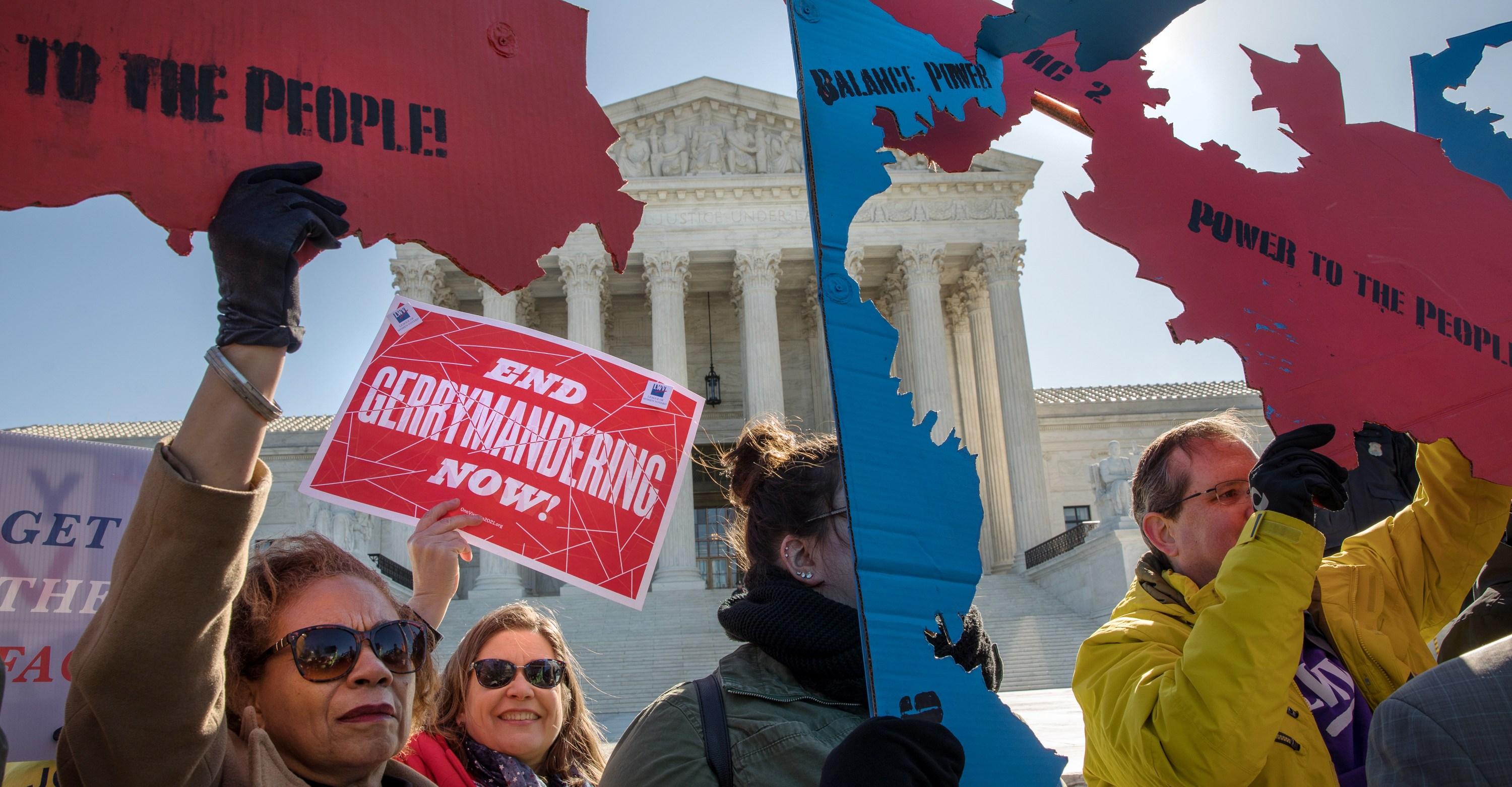Why Norway — the poster child for electric cars — is having second thoughts
Electric cars are crucial, but not enough to solve climate change. We can’t let them crowd out car-free transit options.


OSLO, Norway — With motor vehicles generating nearly a 10th of global CO2 emissions, governments and environmentalists around the world are scrambling to mitigate the damage. In wealthy countries, strategies often revolve around electrifying cars — and for good reason, many are looking to Norway for inspiration.
Over the last decade, Norway has emerged as the world’s undisputed leader in electric vehicle adoption. With generous government incentives available, 87 percent of the country’s new car sales are now fully electric, a share that dwarfs that of the European Union (13 percent) and the United States (7 percent). Norway’s muscular EV push has garnered headlines in outlets like the New York Times and the Guardian while drawing praise from the Environmental Defense Fund, the World Economic Forum, and Tesla CEO Elon Musk. “I’d like to thank the people of Norway again for their incredible support of electric vehicles,” he tweeted last December. “Norway rocks!!”
I’ve been writing about transportation for the better part of a decade, so all that fawning international attention piqued my curiosity. Does Norway offer a climate strategy that other countries could copy chapter and verse? Or has the hype outpaced the reality?
So I flew across the Atlantic to see what the fuss was about. I discovered a Norwegian EV bonanza that has indeed reduced emissions — but at the expense of compromising vital societal goals. Eye-popping EV subsidies have flowed largely to the affluent, contributing to the gap between rich and poor in a country proud of its egalitarian social policies.
Worse, the EV boom has hobbled Norwegian cities’ efforts to untether themselves from the automobile and enable residents to instead travel by transit or bicycle, decisions that do more to reduce emissions, enhance road safety, and enliven urban life than swapping a gas-powered car for an electric one.
Despite the hosannas from abroad, Norway’s government has begun to unwind some of its electrification subsidies in order to mitigate the downsides of no-holds-barred EV promotion.
“Countries should introduce EV subsidies in a way that doesn’t widen inequality or stimulate car use at the expense of other transport modes,” Bjørne Grimsrud, director of the transportation research center TØI, told me over coffee in Oslo. “But that’s what ended up happening here in Norway.”
And it could happen in other countries, too, including in the United States, where transportation is the single largest source of greenhouse gas emissions. The federal government now offers tantalizing rebates to Americans in the market for an electric car, but nothing at all for more climate-friendly vehicles like e-bikes or golf carts (nor a financial lifeline for beleaguered public subway and bus systems).
Ending the sales of gas-powered cars, as Norway is close to doing, is an essential step toward addressing climate change. But a 2020 study found that even the most optimistic forecasts for global EV adoption would not prevent a potentially catastrophic 2 degree Celsius rise in global temperatures. Reducing driving — not just gas-powered driving — is crucial.
As the world’s EV trendsetter, Norway’s experience offers a bevy of lessons for other nations seeking to decarbonize transportation. But some of those lessons are cautionary.
How Norway fell in love with the electric car
At first glance, Norway’s EV embrace might seem odd. The country lacks a domestic auto industry and its dominant export is, of all things, fossil fuels. Nevertheless, Norway’s unique geography and identity helped put it at the vanguard of car electrification.
Historically, Norway has been mostly rural; as recently as 1960, half the nation’s population resided in the countryside. But as the postwar economy boomed, Norwegians migrated to cities, and especially to their fast-growing, sprawling suburbs (much as Americans did at the time). They also fell hard for the automobile.
“The car was this genius idea for Norwegians,” Ulrik Eriksen, author of the book A Country on Four Wheels, told me over dinner in Oslo, after stashing his cargo e-bike. “Because there is plenty of land, cars opened up urban space for people to live in, letting more of them get sizable single-family homes.”
Norway embarked on a road-building binge, constructing bridges over fjords and boring tunnels through mountains to connect downtowns with new neighborhoods on the urban fringe. As Norwegian cities expanded, public transit took a back seat. Bergen, for instance, shuttered its extensive tramway service in the 1960s, dumping some of the trams into the North Sea.
:no_upscale()/cdn.vox-cdn.com/uploads/chorus_asset/file/25045766/GettyImages_1753190518.jpg)
Those decisions cast a long shadow: Norway still has one of Europe’s lowest rates of public transportation usage and a higher car ownership rate than Denmark and Sweden, its Scandinavian neighbors. “Most Norwegian cities now have more of a car-centric, American approach toward transportation than a multi-modal, European one,” Eriksen said.
Norway’s city residents often own an automobile even though they seldom use it, Oslo-based urban planner Anine Hartmann told me. “Norwegians identify as coming from the place where their parents or grandparents come from,” she said. “Many people have a car to return to that place or simply to visit a cabin in the country.”
By the 1990s, the automobile was Norway’s indispensable vehicle. It was then that Norwegian entrepreneurs launched two early electric car startups, Buddy and Think. Though their models were clunky and inefficient by today’s standards, the companies spurred excitement that Norway could become a global hub of EV production. Seeking to give the carmakers a tailwind, the Norwegian government exempted EVs from the country’s steep taxes on car purchases, which today add an average of $27,000 to each sale. Even better, EV owners — who at the time were few and far between — would not pay for tolls, parking, or ferries (over all those fjords) anywhere in the country.
Norway’s dreams of becoming a global hub of EV manufacturing quickly fizzled when the companies ran into financial problems. (This summer, I spotted a tiny, aged Buddy squeezed into an Oslo parking spot, dwarfed by SUVs on either side.) But the incentives remained on the books; since few people were buying EVs, their cost was negligible.
:no_upscale()/cdn.vox-cdn.com/uploads/chorus_asset/file/25045640/signal_2023_10_30_144311_002.jpeg)
That changed as the global EV market improved in the mid-2010s, with carmakers like Tesla offering stylish, high-performance models that attracted more buyers. Norway’s EV policies were now championed as a centerpiece of the national effort to slow climate change in an economy whose electricity is already clean, produced largely from hydropower. “We want people to buy electric cars,” Norwegian Prime Minister Erna Solberg said in 2019. “It is the most important thing you can do personally and privately to help reduce climate emissions.”
As EV models improved, Norwegians began to realize how valuable the cost savings from government incentives could be, particularly for urban commuters. After an already discounted EV purchase, owners’ ongoing expenses were minimal because Norwegian electricity is inexpensive (due to abundant hydropower), and EVs were exempt from tolls, parking, and ferries. EV owners were even invited to drive in bus-only lanes.
Hundreds of thousands of Norwegians responded to the government’s invitation to buy an EV, seemingly saving money and the planet in one fell swoop. But not every EV purchase replaced a gas guzzler; Grimsrud noted that the Norwegians owned 10 percent more cars per capita at the end of the 2010s than they did at the decade’s outset, in large part due to the EV incentives. “The families who could afford a second or third car ran off to the shop and bought one,” he said.
Norway’s incentives have unquestionably reshaped the country’s car market and reduced carbon emissions. EVs’ share of new vehicle sales surged from 1 percent in 2014 to 83 percent today. Around one in four cars on Norwegian roads is now electric, and the country’s surface transportation emissions fell 8.3 percent between 2014 and 2023.
The national government seems ready to declare victory. “When it comes to electrical vehicles, I’m quite proud,” Cecilie Knibe Kroglund, Norway’s state secretary for transportation, told me at the Oslo headquarters of the Ministry of Transport. “My main lesson is that incentives work. We have succeeded at a large scale.”
But not everyone shares her enthusiasm. Although the EV rush has reduced tailpipe emissions, it has also entrenched car dependence, which inflicts other kinds of damage. “Climate change gave Norway an opportunity to change how we travel,” said Eriksen. “I worry we had this once-in-a-generation chance to fix our transportation network, and we blew it.”
EV subsidies fueled car sales, but Norway’s cities want fewer cars
As electric car sales picked up throughout the 2010s, Norway placed few constraints on its EV incentives. Wealthy Norwegians could buy as many high-end EVs as they liked, receiving a full package of subsidies on each one. Luxury carmakers like Porsche advertised Norway’s promotions in their marketing materials.
Although the EV policies were fueling a car-buying frenzy for affluent residents, they offered little to those of limited means. Many low-income Norwegians do not own a car: In Bergen, for instance, 67 percent of households in the lowest income quartile go without one. One recent study found the likelihood that a Norwegian household would purchase an EV rose 26 percent with each 100,000 Norwegian Krones (around $11,000) in annual income, suggesting that electrification subsidies — which ballooned to $4 billion in 2022, equivalent to 2 percent of the national budget — have redistributed resources toward the rich.
Meanwhile, EV incentives have undermined the shift away from automobiles that Norwegian city officials, like their counterparts throughout Europe, are increasingly encouraging. “Everyone agrees that 100 percent of cars should be electric. That’s not the question,” Tiina Ruohonen, a climate advisor to the mayor of Oslo, told me. “The real question is whether you really need to own a car in Oslo.”
Over the last decade, Oslo has joined Bergen, Trondheim, and Stavanger (Norway’s four largest cities) in committing to meet all future trip growth through transit, biking, and walking — not cars. Seeking to reduce driving, Oslo has removed over 4,000 parking spots since 2016 while also building bike lanes, widening sidewalks, and adjusting traffic patterns to reduce through traffic. Those efforts helped the city achieve a remarkable milestone in 2019: For a full year, not a single pedestrian or cyclist was killed in a crash.
:no_upscale()/cdn.vox-cdn.com/uploads/chorus_asset/file/25045774/IMG_4103.jpg)
Walking and biking through Oslo helped me understand how it became so safe. The few motor vehicles I encountered within the city center moved carefully through streets thronged with pedestrians (some blocks are entirely car-free). Traffic typically moved at the speed of my e-bike; my one moment of anxiety came when a passing streetcar startled me as I gazed at Oslo’s picturesque harbor.
Many local leaders recognize that reducing car dependence will enhance urban life. “I am certain that when people imagine their ideal city, it would not be a dream of polluted air, cars jammed in endless traffic, or streets filled up with parked cars,” Hanne Marcussen, Oslo’s former vice mayor of urban development, told Fast Company in 2019.
But there are inherent conflicts between cities’ efforts to limit driving and the Norwegian government’s promotion of EVs. Oslo’s elimination of street parking and creation of pedestrian-only streets, for instance, nudge Norwegians away from driving, but they also diminish EVs’ usefulness.
“The way to get people to buy EVs is to make them easy and cheap to use,” said Eriksen. “But cities don’t want driving cars to be easy and cheap.” A recent study of EV subsidies in Bergen underscores those tensions, finding that promoting EV adoption hampers cities’ ability to build dense neighborhoods that shorten trips and strengthen transit.
The effect of EV adoption on public transportation has been a particular concern for Norway’s cities because boosting transit ridership has been a linchpin of local mobility strategies. Bergen, for instance, opened its first light rail line in 2010, and Trondheim overhauled its bus fleet in 2019. But because generous EV incentives make driving cheaper, they make public transportation relatively less cost-competitive.
Worse, EV promotions have shrunk the funding available to invest in transit improvements because Norwegian public transportation budgets are partly funded through the road tolls that the national government exempted EV owners from paying. As more Norwegians purchased EVs, transit revenue fell, threatening major investments like a new metro line in Oslo. “One of my primary concerns is that because we are subsidizing EVs through the cheaper toll roads, we don’t have the money to pay for big transit infrastructure projects,” said Eivind Trædal, an Oslo city councilmember who until a few weeks ago led the city’s council’s environment and transportation committee.
National officials, for their part, have stuck to pro-EV messaging and refrained from discouraging driving. Despite its generous incentives for electric cars, the Norwegian government provides no discounts for those buying e-bikes or e-cargo bikes (Oslo and Bergen offer limited programs for residents). The country’s current 12-year National Transport Plan includes initiatives to catalyze the adoption of zero-emissions vehicles, but none to reduce car trips.
Trædal said that politics led the Norwegian government to downplay reducing transportation emissions through transit, biking, and walking — all of which produce significantly fewer emissions than driving an EV. “Nobody’s mad about getting a cheaper new car, right?” he shrugged. “It’s politically easier to just give them car subsidies.”
When I asked Kroglund, the country’s transportation state secretary, if Norway’s government seeks to reduce total kilometers driven, she said it does not. “We don’t have a specific goal [to reduce driving],” she told me. “Of course, we would like to get more people on public transportation and bikes. But that is more something that cities work on.”
But national policy decisions inevitably affect local transportation efforts — and sometimes undermine them. Last October, the Norwegian Public Roads Administration opened E39, a four-lane highway into Bergen that the city had opposed due to concerns that it would increase driving. Those fears proved justified. Lars Ove Kvalbein, a Bergen city adviser on sustainable mobility, told me that before E39 opened, 30 percent of those traveling into the city from the south had used a car, but after the highway opened that share jumped to 40 percent.
“E39 was part of a national plan that smashed all the positive local plans to pieces,” he said.
Other countries can avoid repeating Norway’s mistakes
In the last few years, Norway has begun to confront the tensions within its push for car electrification. In 2017, the country began requiring EV owners to pay for parking, road tolls, and ferries, although they still receive a discount. As of this past January, only the first $45,000 of a new EV’s purchase price is tax-free. Buyers of the largest (and often priciest) EVs must also pay an additional fee that scales with vehicle weight.
“The argument is to make the tax system more fair,” said transportation state secretary Kroglund, “and not give benefits for things that are unnecessary for the transition to EVs.” As a result of the new policies, Norwegian sales of some high-end EVs, like the enormous Chinese Hongqi SUV, have collapsed.
Looking to the future, TØI’s Grimsrud hopes that Norway’s next 12-year National Transport Plan beginning in 2025 will include a goal of limiting total driving, which could restrain highway expansion plans and direct more investment toward transit. “If you start with a national goal for reducing transportation emissions, it will force you to focus more on public transportation and less on road construction,” he said.
For other countries, a clear Norwegian lesson is that a focus on reducing transportation emissions through electric car adoption can worsen inequality. Capping the price of eligible vehicles and limiting the number of EVs that a household can purchase tax-free are intuitive moves that Norway took only belatedly.
At the same time, Norway offers a warning about the dangers of promoting EVs at the expense of modes that are more beneficial to the environment as well as urban life. The national government’s decision to subsidize electric cars but not e-bikes makes no sense from a climate perspective, although the United States Congress made the same mistake when it passed the Inflation Reduction Act last year. At a minimum, countries should ensure that EV adoption does not deplete resources needed for public transportation investments, as has happened in Norway and could occur in the US, since EVs reduce gasoline tax revenues, a portion of which funds American transit.
With frequent bus and rail service, walkable city centers, and expanding networks of bike lanes (including, in Bergen, the longest purpose-built bike tunnel in the world), Norwegian cities are far ahead of American peers in providing viable alternatives to driving. Nevertheless, over the last decade, US cities have taken significant steps forward: Bike share programs are now a fixture, and new bus rapid transit lines have emerged in places like Madison, Richmond, and Washington, DC. New York City and San Francisco have even experimented with making major thoroughfares car-free. But if local initiatives aren’t matched with supportive federal policies, Norway’s experience suggests that an influx of electric vehicles can hinder efforts to escape the automobile’s urban stranglehold.
“The mistake is to think that EVs solve all your problems when it comes to transport,” said Ruohonen, the Oslo mayoral adviser. “They don’t.”
The reporting of this story was supported by the Heinrich Boll Foundation through a Transatlantic Media Fellowship. Lucas Peilert provided research assistance.

China’s Alibaba giant enters the smart glasses race with removable batteries
- 4 hours ago

Why did Trump pardon a Honduran drug lord?
- 2 hours ago

Republicans ask the Supreme Court to gut one of the last limits on money in politics
- 2 hours ago
How do Barça contain Atlético's Jack Reacher-like striker?
- 3 hours ago

What podcasts do to our brains
- 2 hours ago

Runway says its new text-to-video AI generator has ‘unprecedented’ accuracy
- 4 hours ago

Why is Trump suddenly so obsessed with Honduras?
- 2 hours ago

The Case for Growth
- 2 hours ago

We handpicked 12 great gaming laptops that are hundreds off for Black Friday
- 4 hours ago

The alt-right won
- 2 hours ago
Texas def. South Carolina on Harmon's late shot
- 3 hours ago

Republicans want the Supreme Court to save them from their own inept mistake
- 2 hours ago









